Lo spazio per la sicurezza aerea
Primavera e migrazioni: un fenomeno ancora avvolto dal mistero
Mercurio è nero di carbonio
 Come Han Solo di "Guerre stellari", anche Mercurio ha subito un rivestimento di grafite: una crosta solidificata dal primordiale oceano di magma. Una nuova analisi dei dati della sonda Messenger attribuisce proprio a brandelli riemersi da quell'antico guscio l'alta percentuale di carbonio che rende scura la superficie del pianeta Continue reading
Come Han Solo di "Guerre stellari", anche Mercurio ha subito un rivestimento di grafite: una crosta solidificata dal primordiale oceano di magma. Una nuova analisi dei dati della sonda Messenger attribuisce proprio a brandelli riemersi da quell'antico guscio l'alta percentuale di carbonio che rende scura la superficie del pianeta Continue reading
Young Perspectives on Nuclear Careers: IAEA Celebrates International Women’s Day
How do we increase interest among young people, particularly girls, in studying science? Why are women still a minority among nuclear scientists and engineers? Why is it so important for the IAEA and other United Nations organizations to achieve gender parity? These and similar questions were the focus of the discussion at an IAEA forum marking International Women’s Day.
Art of Darkness
The Dark Energy Survey’s art show offers a glimpse of the expanding universe.
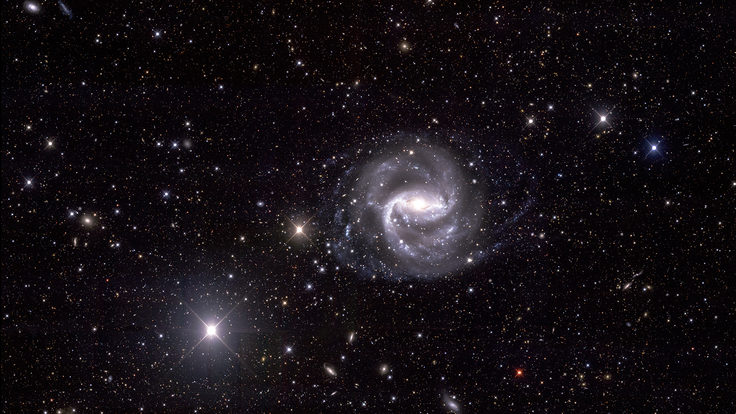
Imagine a clear night in the mountains, away from glaring city lights. In the sky, gleaming speckles from distant stars cascade into the bright streams of the Milky Way. Almost everything in sight is part of our home galaxy.
To provide a glimpse beyond our galaxy and into an ever-expanding universe, the Department of Energy’s Fermilab is hosting the Art of Darkness, an exhibition by Dark Energy Survey collaborators. The exhibit opened Feb. 19 in the Fermilab Art Gallery and showcases images from celestial objects from DES’ Dark Energy Camera, DECam.
“We see so much information in the artwork that ends up being a small part of the whole DES footprint,” says Brian Nord, an astrophysicist and contributor to the DES art exhibit. “This showcase highlights the depth of a universe we don’t completely see with the naked eye.”
DES is a five-year survey that covers one-eighth of the sky to better describe dark energy–the force driving the universe’s accelerated expansion. The collaboration has more than 400 scientists from around 30 institutions. It uses the 570-megapixel DECam, one of the largest digital cameras in the world, perched atop the Blanco Telescope at the Cerro Tololo Inter-American Observatory in Chile.
The select few galaxies in the exhibit are from a narrow swath of the sky survey. Creating these photographs for the gallery requires an image-processing pipeline, a method of “cleaning up” the images by removing artifacts such as satellites, airplane or cosmic ray trails, or defects from the camera hardware, says Nikolay Kuropatkin, a DES computational physics software developer.
“We use this pipeline for our scientific surveys, but it turns out to be a good tool for artwork as well,” says Kuropatkin.
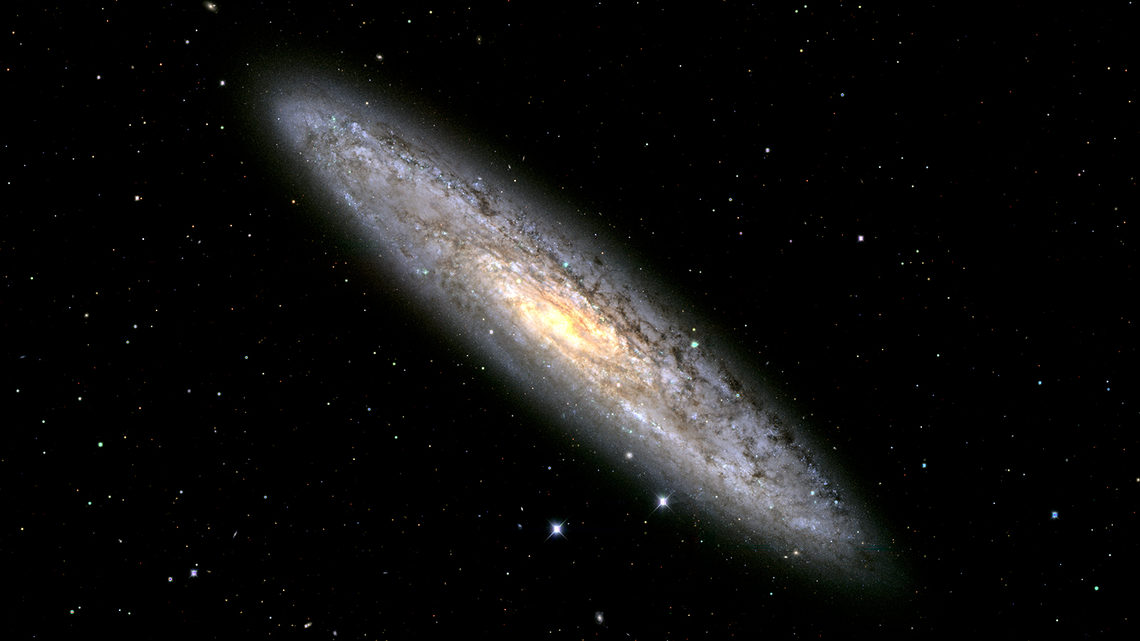
NGC-253: Sculptor Galaxy
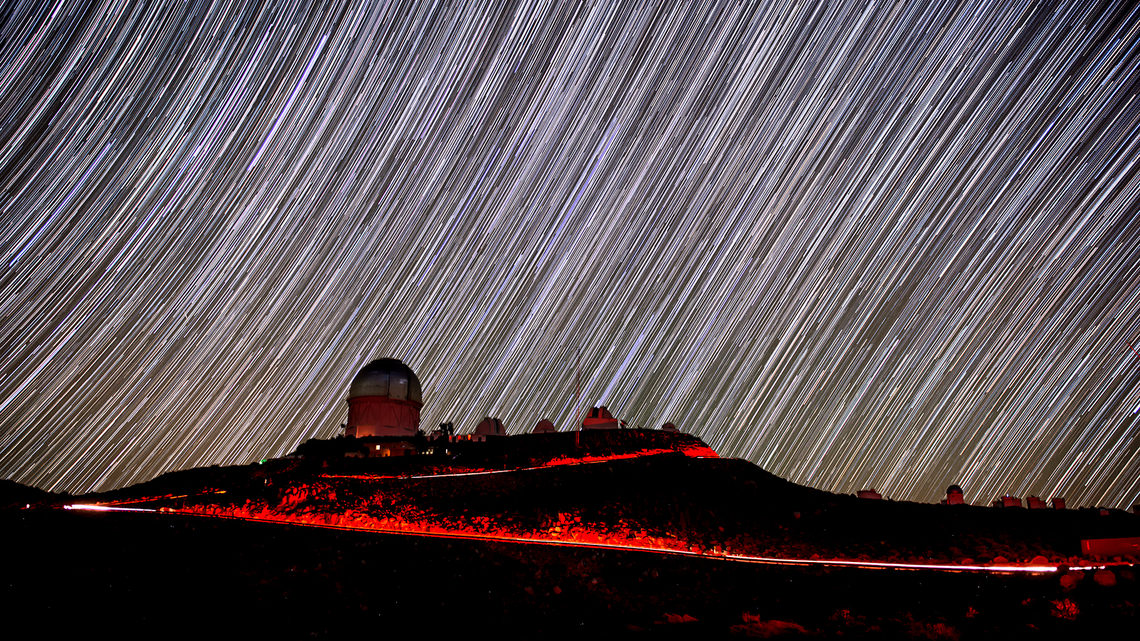
Road to the star trails, featuring the Blanco Telescope
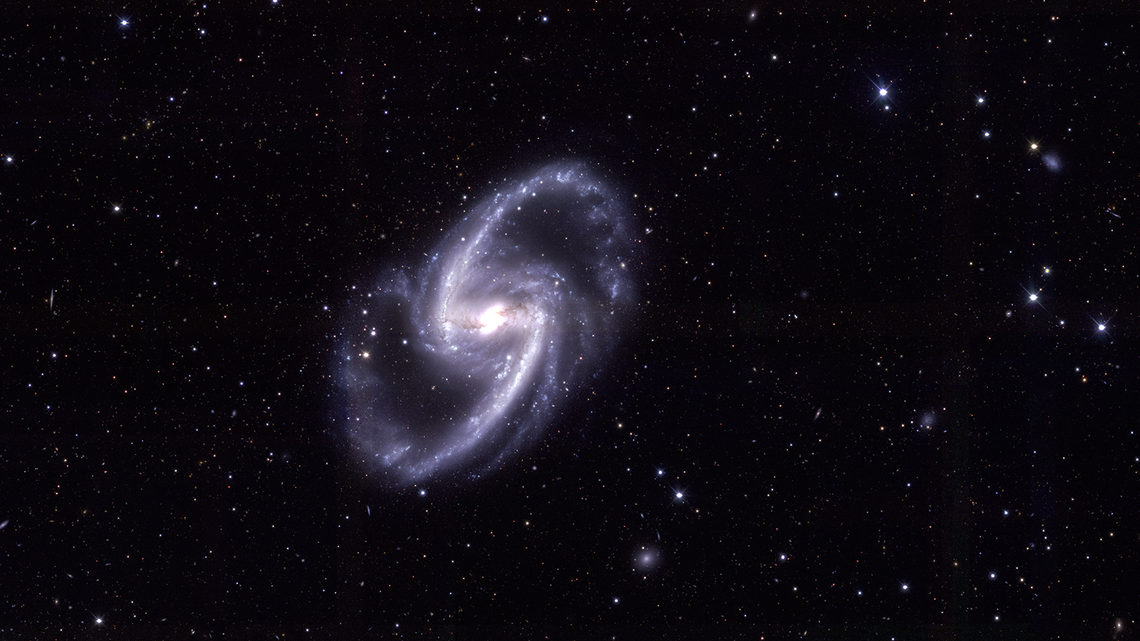
NGC-1365: Great Barred Spiral Galaxy
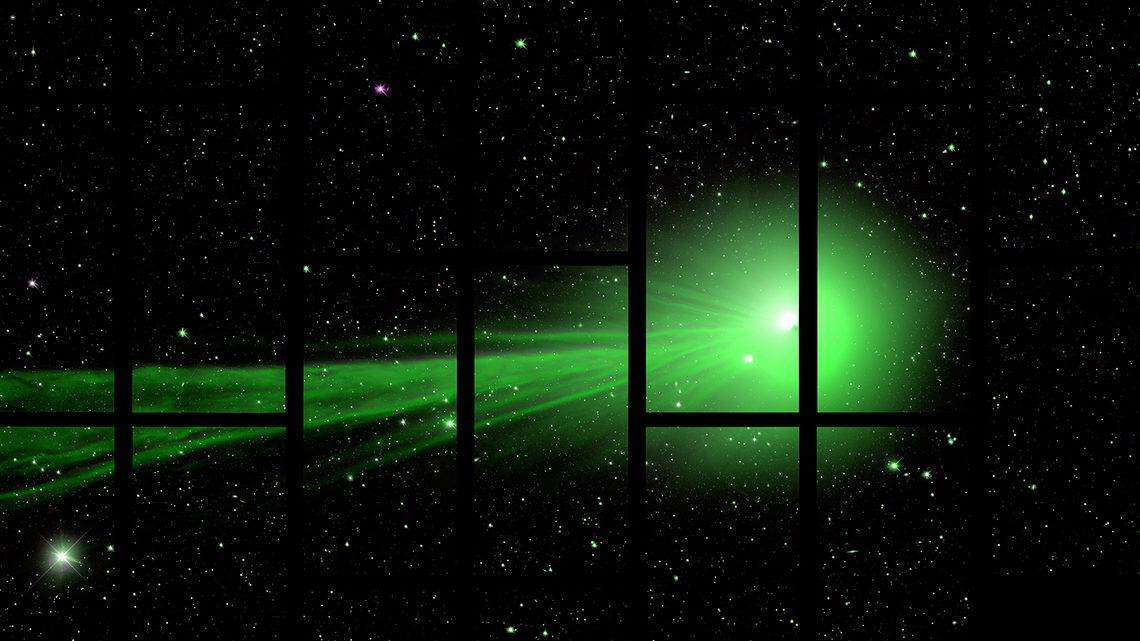
Comet Lovejoy
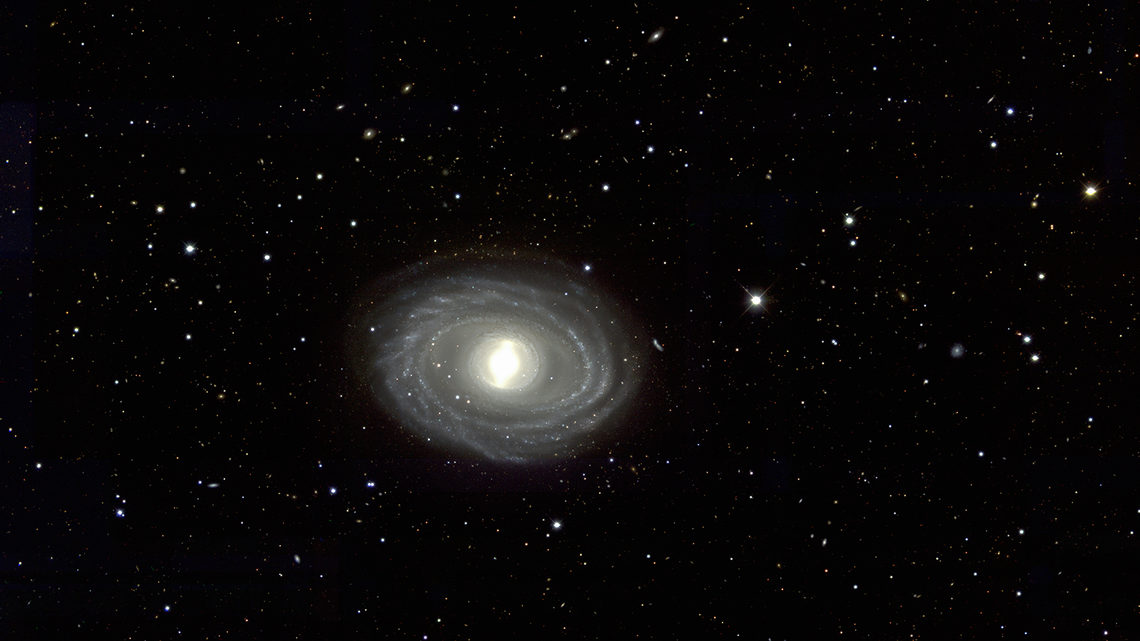
NGC-1398
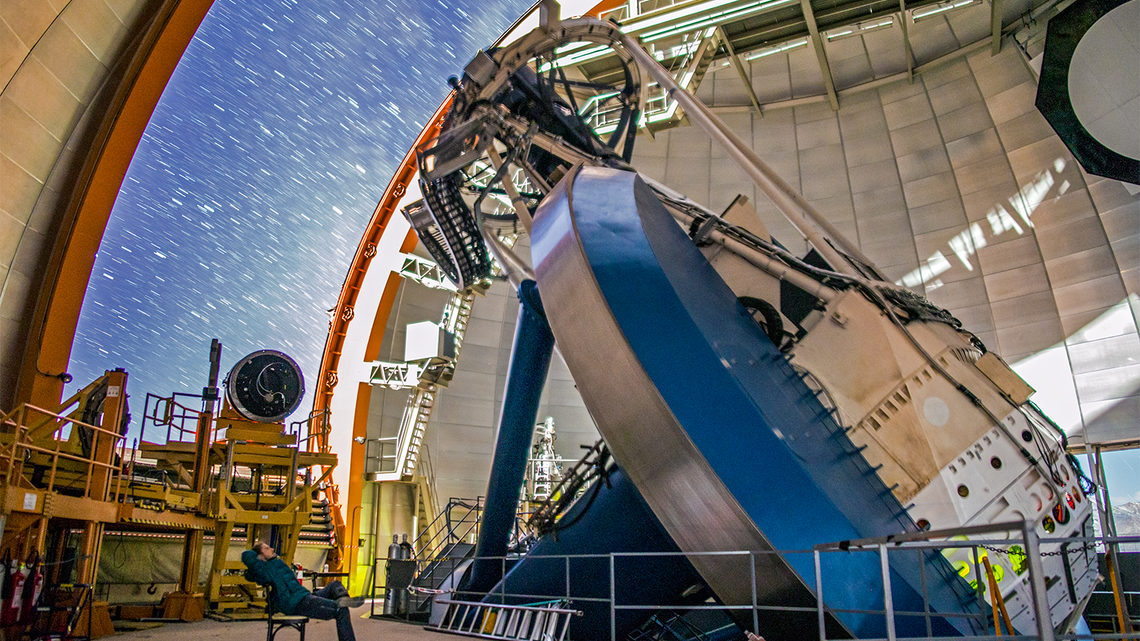
Watching the Dark Energy Camera in action
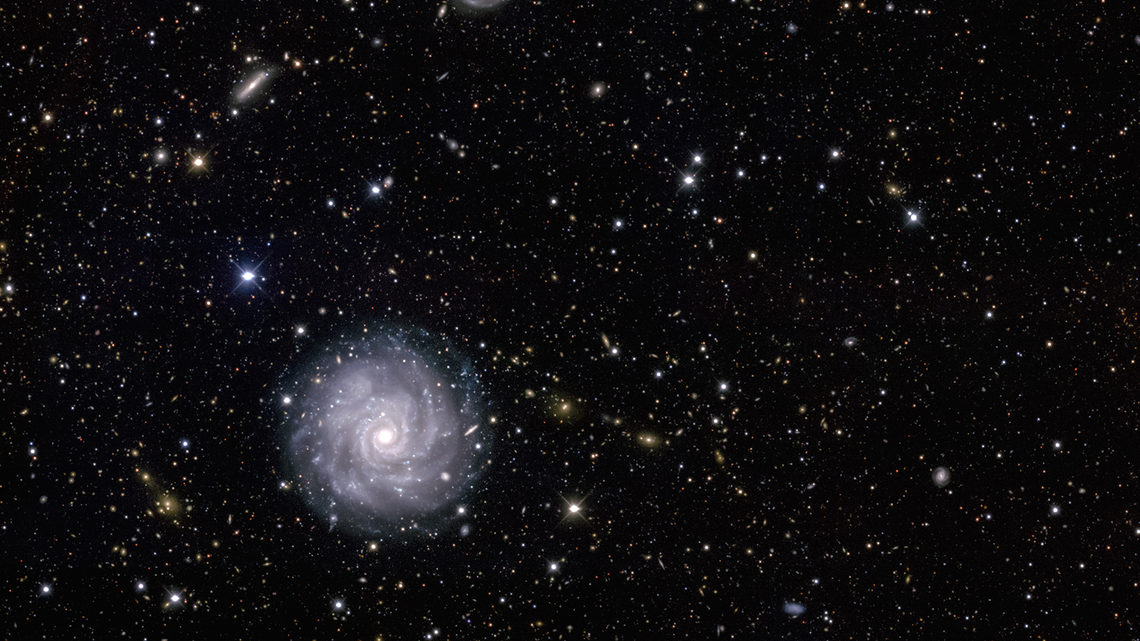
NGC-1703
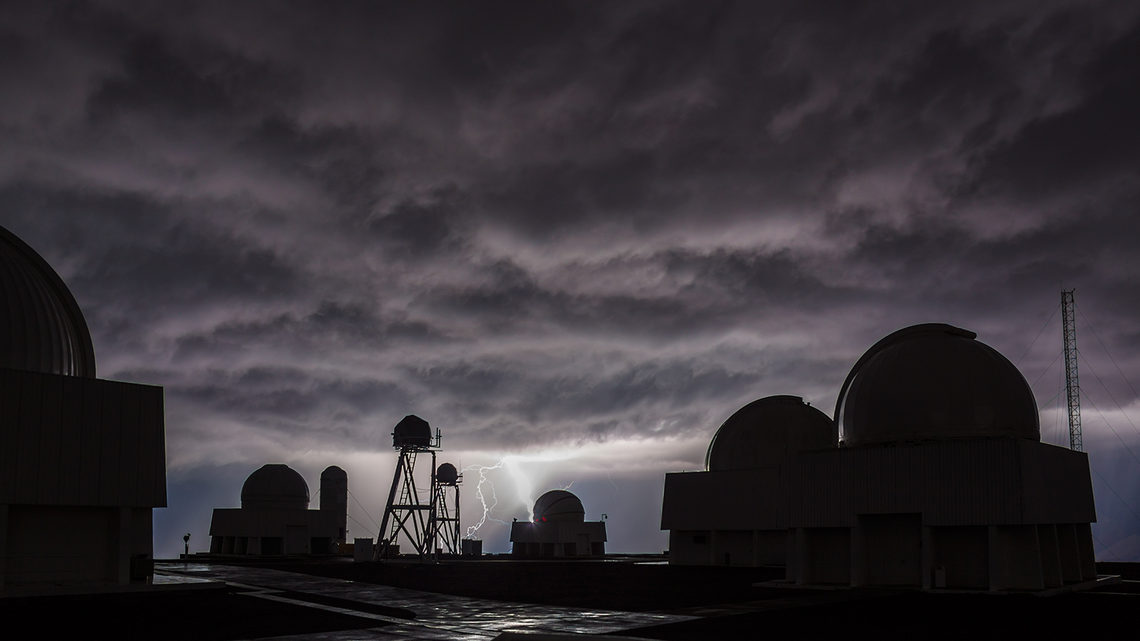
Lightning at the Cerro Tololo summit

NGC-1512
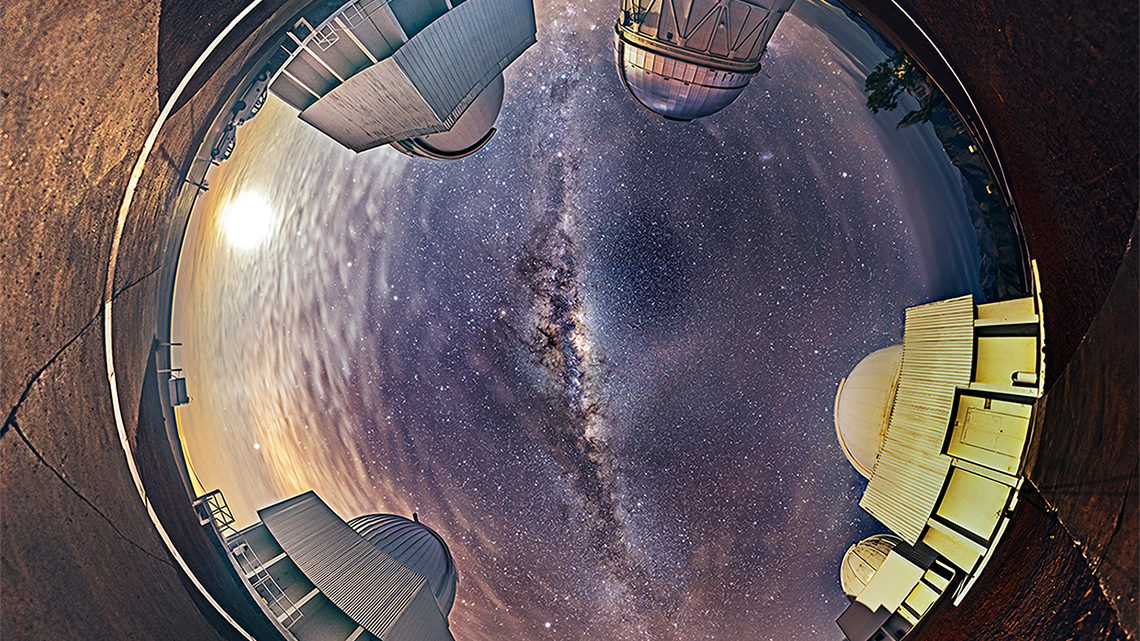
Tiny universe
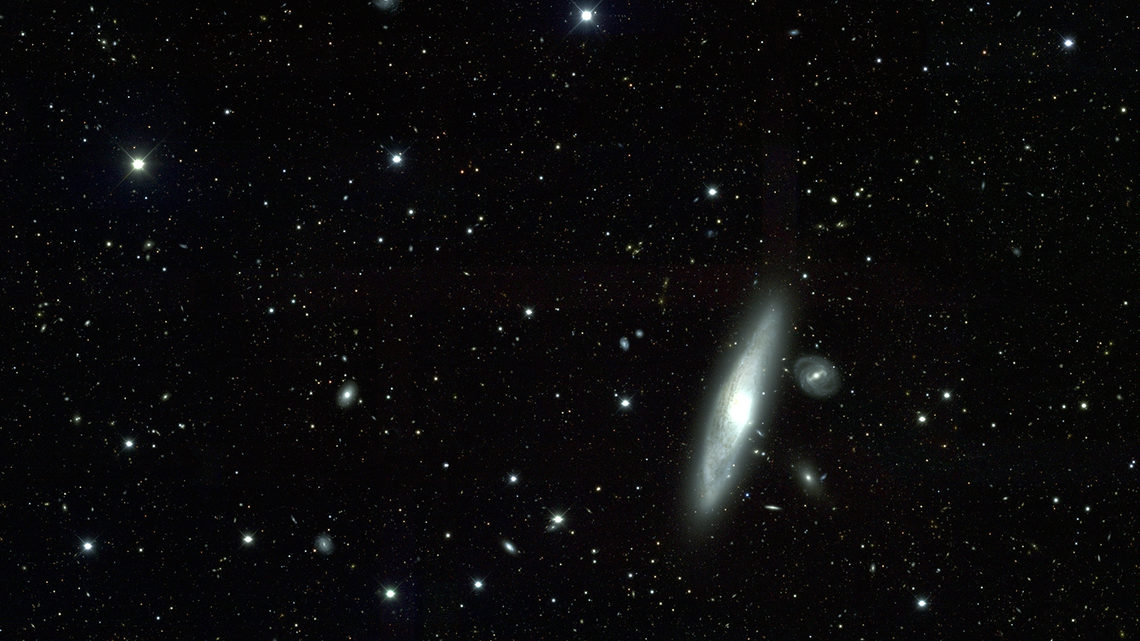
NGC-1515
DECam is a monochromatic camera. Part of the exhibit process required Marty Murphy, an operations specialist in Fermilab’s Accelerator Division, and Nord to add color and further edit the images with an artistic eye.
Five different filters are individually placed between the telescope and camera to gather color information about the galaxy in view. Each filter corresponds to a different bandwidth, or a range of frequencies, on the electromagnetic spectrum. Those single-filter images are then combined to produce a full-color photo.
“A lot of the information in the initial pictures is lost because lots of light emits from the invisible ends of the electromagnetic spectrum,” Murphy says. “We try to bring out colors from the visible spectrum that somewhat represent what’s there and fix any discrepancies between reality and the artwork.”
This close-to-reality representation also helps scientists understand the properties of the galaxies in view. For instance, small clusters that appear red or warmer in color tell us that they are further away from us due to the expansion of the universe, says Brian Yanny, a DES data management project scientist.
“From that we can figure out how big space is and how dark energy might be affecting the size of the universe from the redshift of the object,” he says.
But the art gallery is made of more than just galaxy images. There’s a 3D print of the cosmic web derived from a computer simulation. There’s also a colorful dark matter map of the actual cosmic web that DES observes made using gravitational lensing, a distortion seen when light from background galaxies bends from a massive foreground object.
“Once you know the explanations behind the workings of the cosmos, you realize there are forces out there that make the universe beautiful,” Yanny says. “We’ve come to understand that dark matter holds the shape of spiral galaxies, which have a rapid and unstable spin. Without dark matter, we would not experience the cosmos the way we do now.”
Alongside the DECam photos are images and time-lapse videos from the Blanco Telescope and the surrounding landscapes that provide another perspective of how the very act of research helps bring out the beauty of the universe. The images (on display at Fermilab through April) come from 11 DES collaborators and were collected over the first three seasons of observations, which ended in February. DES will take data for two more years, from August to February.
“I hope the images from the camera combined with the pictures from the site can somehow merge two perspectives,” Nord says. “In essence, it’s humans looking out to the cosmos and the universe looking back at us.”
Lisa Pathfinder, un laboratorio spaziale perfettamente immobile
Una missione per due: Francesca Esposito
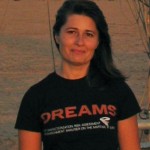 Sono entrambe italiane, e fanno le ricercatrici presso strutture dell’INAF, una presso l'Osservatorio Astronomico di Capodimonte l’altra presso l'Istituto di Astrofisica e Planetologia Spaziali di Roma: sono Francesca Esposito e Maria Cristina De Sanctis. Ma la notizia è che entrambe sono Principal Investigator di due importanti strumenti che faranno parte della missione ESA ExoMars, la cui prima delle due sonde è in partenza il prossimo 14 marzo dal cosmodromo di Bajkonur, in Kazakistan. Media INAF le ha sentite per conoscere meglio la personalità di queste due donne che si sono guadagnate un posto fra le stelle…verso Marte Continue reading
Sono entrambe italiane, e fanno le ricercatrici presso strutture dell’INAF, una presso l'Osservatorio Astronomico di Capodimonte l’altra presso l'Istituto di Astrofisica e Planetologia Spaziali di Roma: sono Francesca Esposito e Maria Cristina De Sanctis. Ma la notizia è che entrambe sono Principal Investigator di due importanti strumenti che faranno parte della missione ESA ExoMars, la cui prima delle due sonde è in partenza il prossimo 14 marzo dal cosmodromo di Bajkonur, in Kazakistan. Media INAF le ha sentite per conoscere meglio la personalità di queste due donne che si sono guadagnate un posto fra le stelle…verso Marte Continue reading
Una missione per due: Maria Cristina De Sanctis
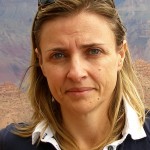 Sono entrambe italiane, e fanno le ricercatrici presso strutture dell’INAF, una presso l'Osservatorio Astronomico di Capodimonte l’altra presso l'Istituto di Astrofisica e Planetologia Spaziali di Roma: sono Francesca Esposito e Maria Cristina De Sanctis. Ma la notizia è che entrambe sono Principal Investigator di due importanti strumenti che faranno parte della missione ESA ExoMars, la cui prima delle due sonde è in partenza il prossimo 14 marzo dal cosmodromo di Bajkonur, in Kazakistan. Media INAF le ha sentite per conoscere meglio la personalità di queste due donne che si sono guadagnate un posto fra le stelle…verso Marte Continue reading
Sono entrambe italiane, e fanno le ricercatrici presso strutture dell’INAF, una presso l'Osservatorio Astronomico di Capodimonte l’altra presso l'Istituto di Astrofisica e Planetologia Spaziali di Roma: sono Francesca Esposito e Maria Cristina De Sanctis. Ma la notizia è che entrambe sono Principal Investigator di due importanti strumenti che faranno parte della missione ESA ExoMars, la cui prima delle due sonde è in partenza il prossimo 14 marzo dal cosmodromo di Bajkonur, in Kazakistan. Media INAF le ha sentite per conoscere meglio la personalità di queste due donne che si sono guadagnate un posto fra le stelle…verso Marte Continue reading

